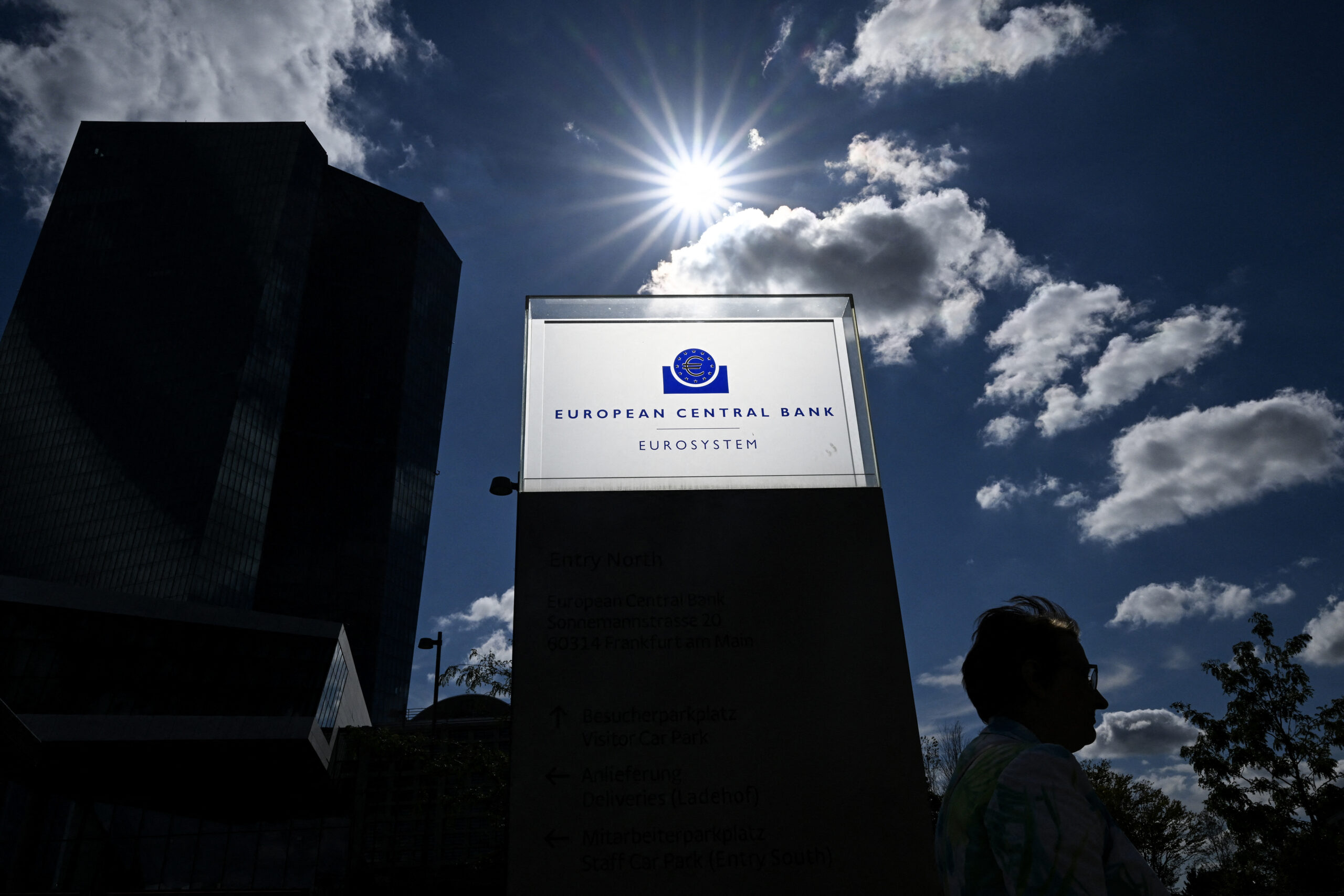
Clouds hang over the European Central Bank (ECB) building on September 14, 2023 ahead of the meeting of the governing council of the ECB in Frankfurt am Main, western Germany. (Photo by Kirill KUDRYAVTSEV / AFP)
Frankfurt, Germany — The European Central Bank is expected to leave interest rates unchanged Thursday, giving the eurozone time to digest last month’s first cut since 2019 as the inflation path remains unpredictable.
ECB governors lowered the closely-watched deposit rate from a record four percent to 3.75 percent at their June meeting, following an unprecedented campaign of monetary tightening to tame red-hot inflation.
ECB president Christine Lagarde said the cut was made possible thanks to steadily falling consumer prices. But she stressed it would not automatically kick off a rapid rate-cutting cycle.
READ: European stocks up as ECB cuts rate, US stocks mixed
Speaking in Portugal’s Sintra earlier this month, Lagarde said “it will take time” for the bank to “gather sufficient data” before deciding the next move.
“The ECB will probably go into the summer break without lowering interest rates again,” said Fritzi Koehler-Geib, chief economist at German public lender KfW.
After a surprise uptick in May, eurozone inflation slowed again in June to reach 2.5 percent.
While still above the ECB’s two-percent target, it’s a far cry from a 10.6-percent peak in 2022 after Russia’s war in Ukraine sent energy and food prices surging.
Inflation is “heading in the right direction”, Lagarde said in Sintra.
But it is still “likely to be a bumpy road until the end of 2024”, she warned.
Sticky services
In June’s updated forecasts, the ECB said it now expects inflation to return to target in late 2025.
But policymakers still see several risk factors on the path to disinflation, and have reiterated their “data-dependent” approach.
They are in particular keeping a close eye on wages in the 20-nation euro area, as workers have in recent years pushed for salary hikes to compensate for higher living costs.
READ: ECB diverges from Fed on rates, sparking jitters
Although wage growth remains elevated, ECB officials appear less concerned than a few months ago amid signs that wage increases could ease over the course of the year.
Stubbornly high inflation in the services sector is another headache for the ECB, staying sticky at 4.1 percent in June.
The eurozone economy meanwhile emerged from recession with greater-than-expected growth of 0.3 percent in the first quarter.
Policymakers will only be armed with new forecasts on growth and inflation in September, strengthening the case for a July pause.
Most observers believe the ECB will lower borrowing costs again at the September meeting, and then once more before the end of the year.
France deficit, Fed shift
“A key prerequisite” for a September cut however “is that there are signs of a slowdown in wage growth by then”, said the KfW’s Koehler-Geib.
“In addition, the ECB’s scope for cutting interest rates also depends on the fiscal policy of European governments,” she said.
Concerns have grown about France’s government finances after snap elections produced a hung parliament, plunging the eurozone’s second-largest economy into uncertainty.
French central bank chief Francois Villeroy de Galhau last week called for reducing the country’s large deficit, and warned that “excessive wage costs” or “taxes that are too heavy” could harm France’s competitiveness.
Across the Atlantic meanwhile, the US Federal Reserve is also increasingly expected to opt for a September rate cut.
Initially tipped to begin lowering borrowing costs before the ECB, stalling progress on US inflation has seen the Fed keep rates frozen at a 23-year high for months.
But observers say Fed chair Jerome Powell recently hinted at a September cut when he told Congress that waiting “too long” to lower rates could weaken economic activity

